Vietnam
Photos
80 Photos
Per Page:
Filter Categories
All
Filters
This low-oblique photograph shows the lower Mekong River and its vast delta. Rising on the Plateau of Tibet, the Mekong flows generally southeast for 4,160 km (2,600 mi) and empties into the South China Sea through the large delta. The vast, swampy delta, crisscrossed by many channels and canals, is one of the greatest rice-growing regions of Asia. Barely discernible northeast of the delta is Ho Chi Minh City, formerly Saigon. Point Cau Mau, the southern tip of Vietnam, is visible southeast of the delta. Image courtesy of NASA.
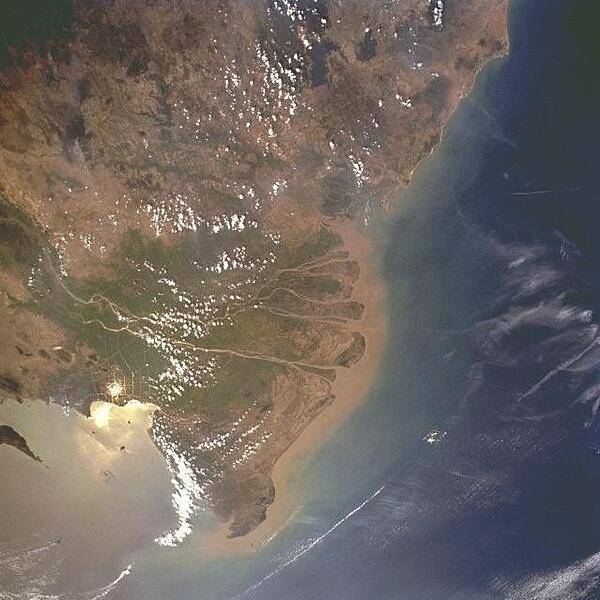
View of Ho Chi Minh City (aka Saigon) from the Saigon River. Saigon is Vietnam's major port and, with 8 million inhabitants, its largest city. It was called Saigon until 1975 when it was renamed Ho Chi Minh City following its capture by North Vietnamese communist forces. Although the city's commercial core is officially called Saigon, the entire city is widely referred to as Saigon even in the North. The city was architecturally influenced by the French during their colonial occupation of Vietnam. Numerous classical Western-style building in the city reflect this, so much so that Saigon was referred to as "The Pearl of the Far East" or "Paris in the Orient." In more recent years, a building boom has transformed the skyline of the city.

View of Ho Chi Minh City (aka Saigon) from the Saigon River. Saigon is Vietnam's major port and, with 8 million inhabitants, its largest city. It was called Saigon until 1975 when it was renamed Ho Chi Minh City following its capture by North Vietnamese communist forces. Although the city's commercial core is officially called Saigon, the entire city is widely referred to as Saigon even in the North. The city was architecturally influenced by the French during their colonial occupation of Vietnam. Numerous classical Western-style building in the city reflect this, so much so that Saigon was referred to as "The Pearl of the Far East" or "Paris in the Orient." In more recent years, a building boom has transformed the skyline of the city.

View of Ho Chi Minh City (aka Saigon) from the Saigon River. Saigon is Vietnam's major port and, with 8 million inhabitants, its largest city. It was called Saigon until 1975 when it was renamed Ho Chi Minh City following its capture by North Vietnamese communist forces. Although the city's commercial core is officially called Saigon, the entire city is widely referred to as Saigon even in the North. The city was architecturally influenced by the French during their colonial occupation of Vietnam. Numerous classical Western-style building in the city reflect this, so much so that Saigon was referred to as "The Pearl of the Far East" or "Paris in the Orient." In more recent years, a building boom has transformed the skyline of the city.
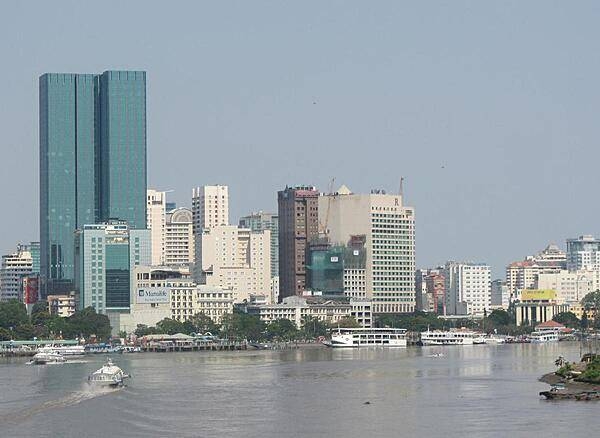
A small flotilla of boats on the Saigon River, which serves as the main water source for the port of Saigon.
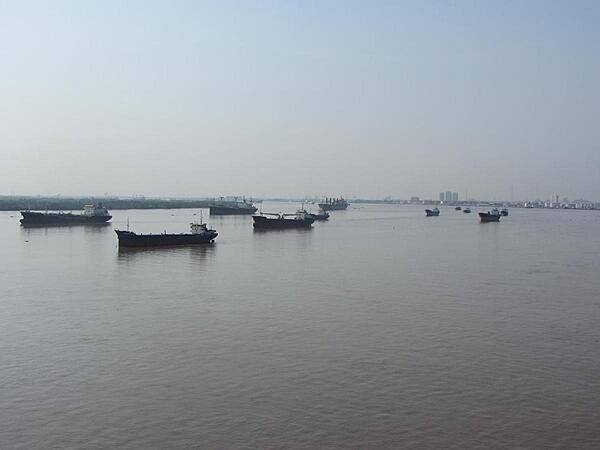
Notre Dame Cathedral in Saigon (Ho Chi Minh City) was built by French colonists from 1877 to 1880. The neo-Romanesque structure was constructed using stained-glass windows imported from Chartres and bricks from Marseilles. Masses are conducted in Vietnamese and English.
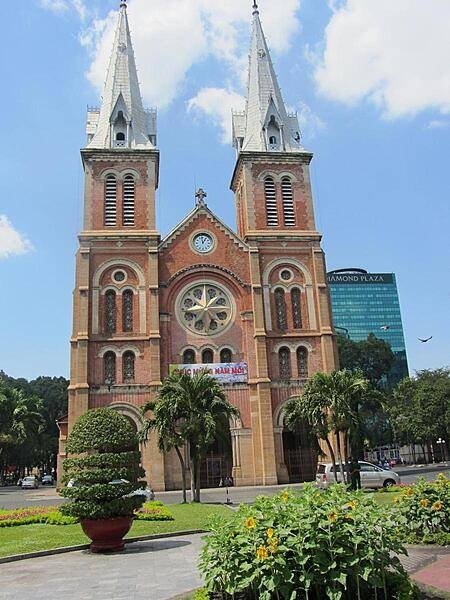
The Central Post Office in Saigon (Ho Chi Minh City) was built between 1886 and 1891 and is one of the oldest buildings in the city. Designed by Gustave Eiffel, it is still in operation.
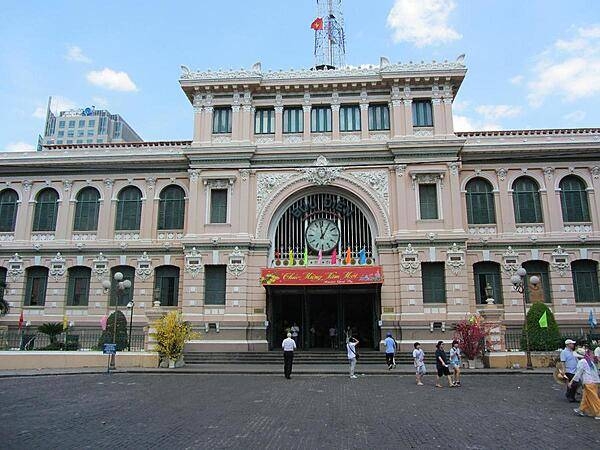
The Central Post Office in Saigon (Ho Chi Minh City) was built between 1886 and 1891 and is one of the oldest buildings in the city. Designed by Gustave Eiffel, it is still in operation. The interior has remained essentially untouched since its construction.
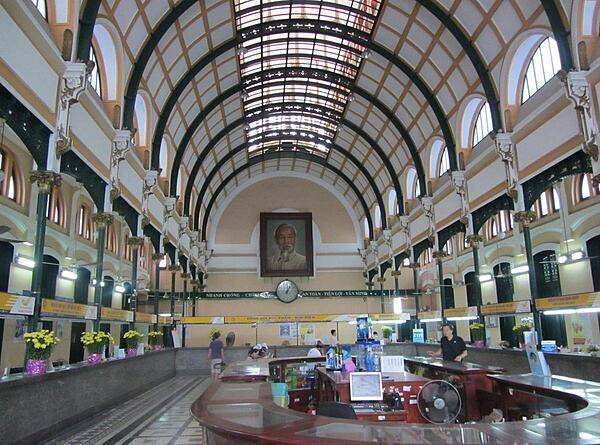
The Central Post Office in Saigon (Ho Chi Minh City) was built between 1886 and 1891 and is one of the oldest buildings in the city. Designed by Gustave Eiffel, it is still in operation.
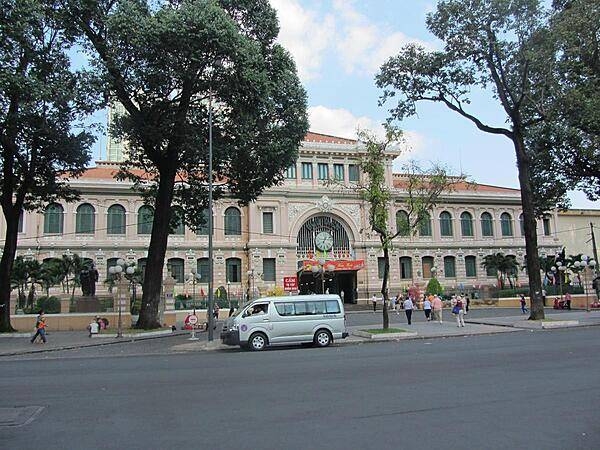
Reunification Palace in Saigon (Ho Chi Minh City). The palace was built between 1962 and 1966 on the site of the former Norodom Palace. It was the official headquarters and residence of the president of South Vietnam. The building was captured by North Vietnamese forces on 30 April 1975 and is now a museum with exhibits frozen in time from 1975.
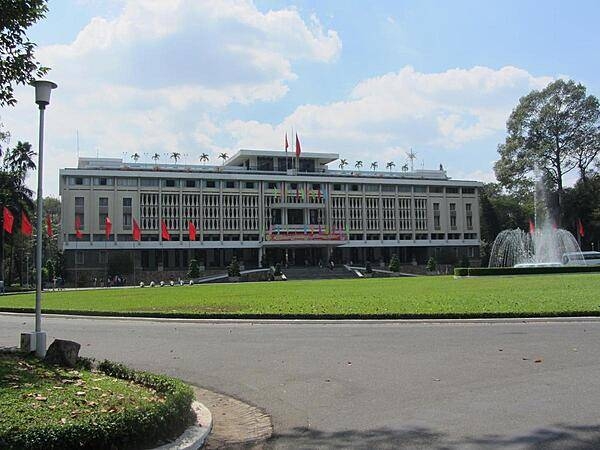
Reception room in the Reunification Palace in Saigon (Ho Chi Minh City). The palace was built between 1962 and 1966 on the site of the former Norodom Palace. It was the official headquarters and residence of the president of South Vietnam. The building was captured by North Vietnamese forces on 30 April 1975 and is now a museum with exhibits frozen in time from 1975.
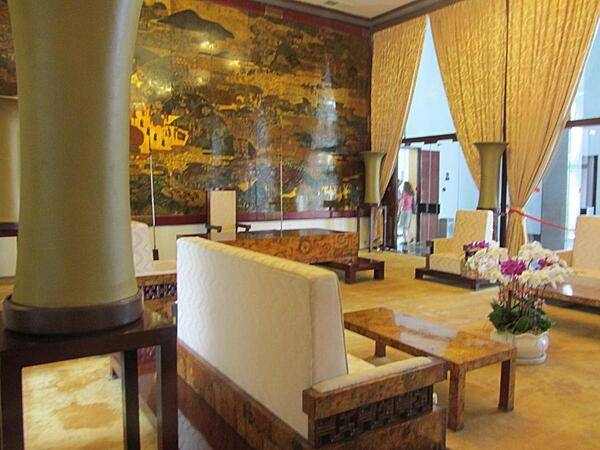
City Hall in Saigon (Ho Chi Minh City) was built in French colonial style between 1898 and 1908. Officially known as the Ho Chi Minh City People's Committee Building, the lovely structure is a working government building and is not open to the public.
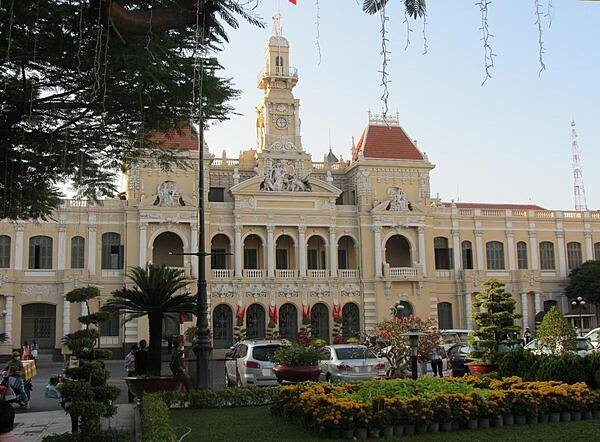
Page 01 of 07